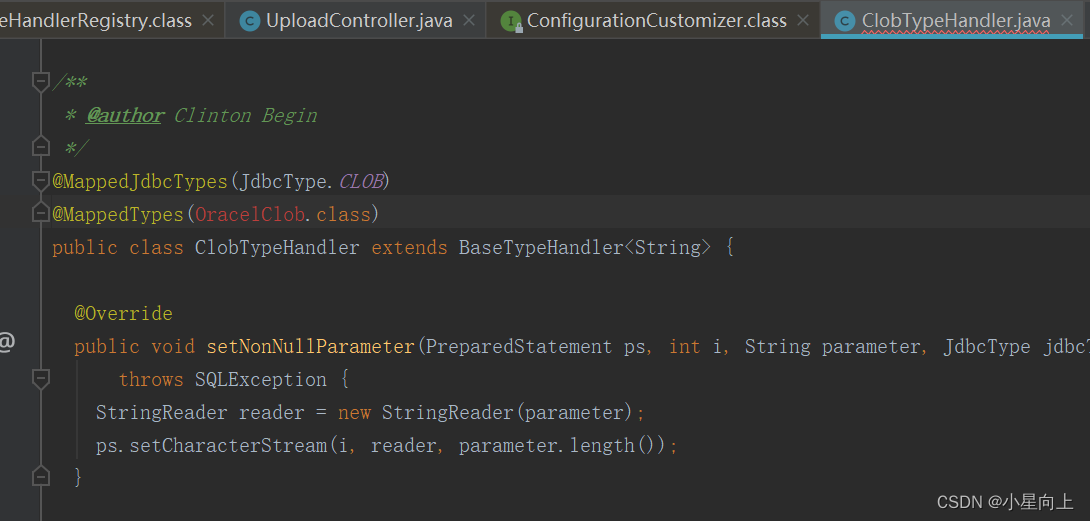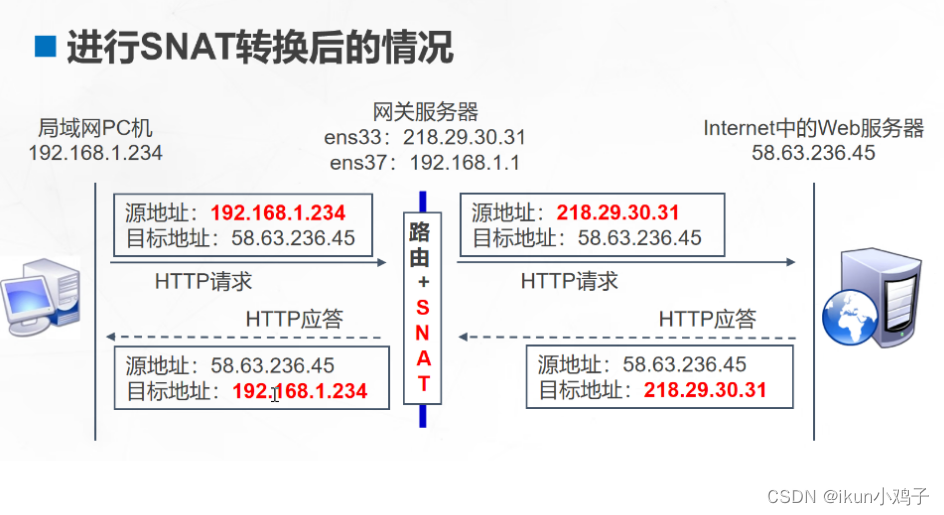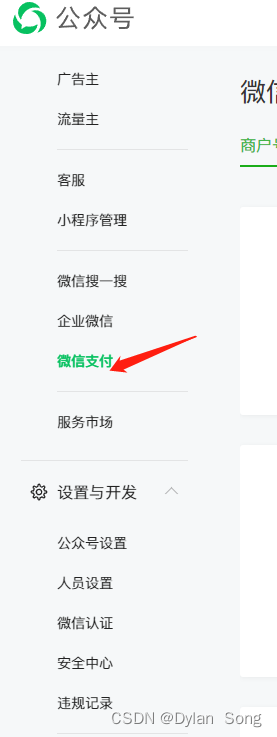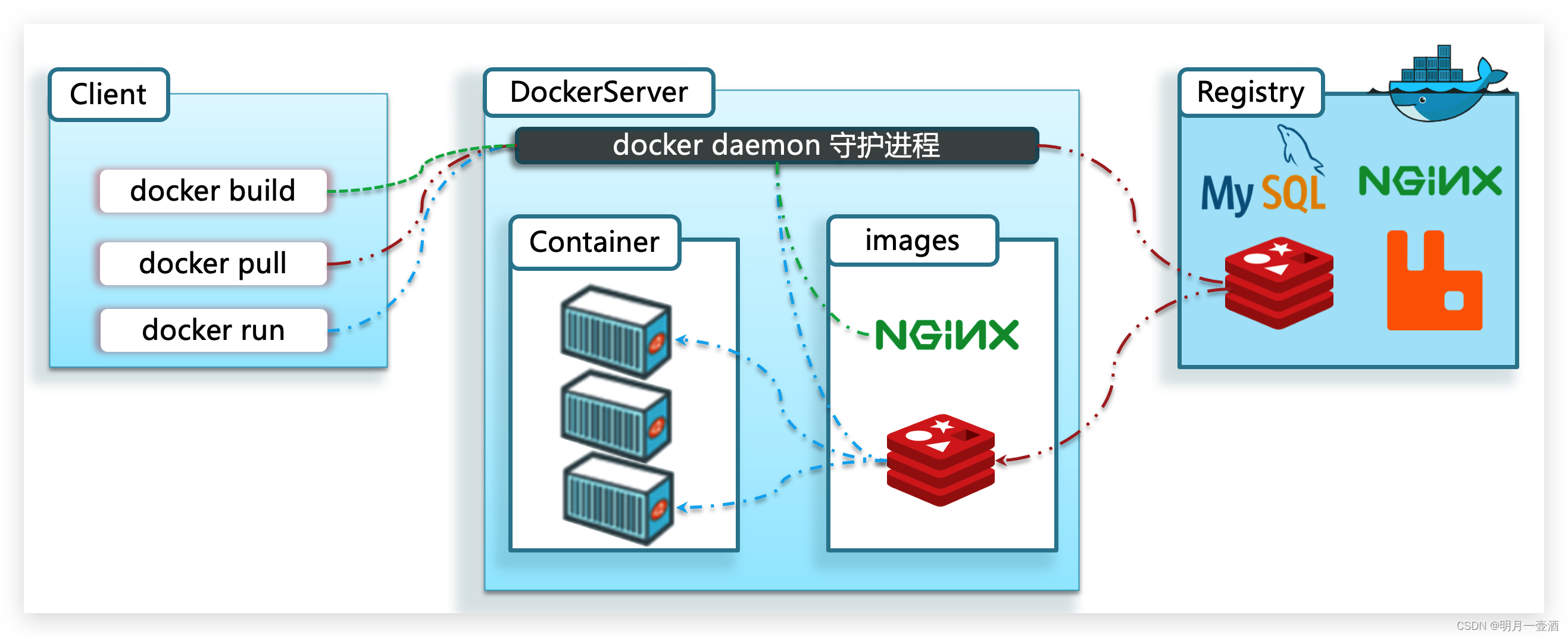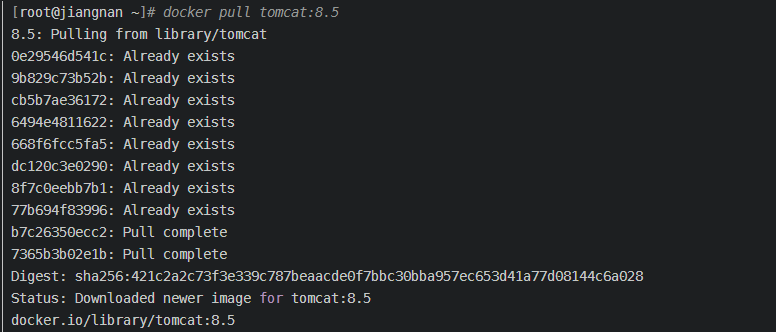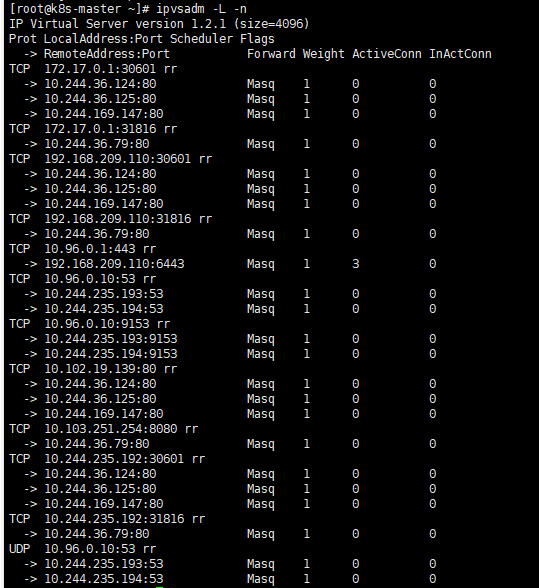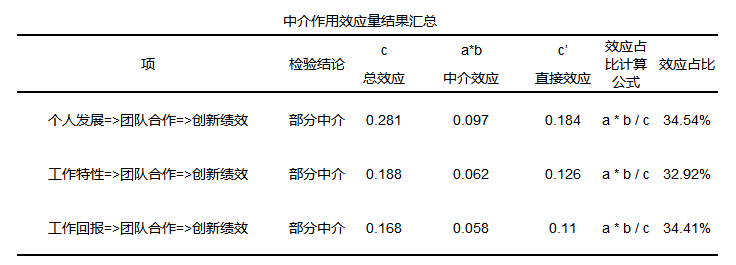主要有5个模块,分别是peer、orderer、cryptogen、configtxgen、configtxlator
| 模块 | 功能 |
|---|---|
| peer | 主节点模块,负责存储区块链数据、运行维护链码 |
| orderer | 交易打包,排序模块 |
| cryptogen | 组织和证书生成模块 |
| configtxgen | 区块和交易生成模块 |
| configtxlator | 区块和交易解析模块 |
peer和orderer属于系统模块,cryptogen、configtxgen和configtxlator属于工具模块。
Fabric模块配置信息由配置文件、命令行、环境变量三个部分构成。这三种配置方式存在如下关系:
环境变量>配置文件>命令行
cryptogen
该模块主要用来生成组织结构和账号相关的文件。一般都是先编写相关配置文件,用cryptogen模块生成相关证书文件。
cryptogen命令说明
一共有4个命令:

usage: cryptogen [<flags>] <command> [<args> ...]
**heip:**显示帮助信息
**generate:**根据配置文件生成证书信息
Flags:
--help 查看完整的帮助(可以尝试 --help-long 和 --help-man)。
--output="crypto-config" 用来存放构件的输出目录。
--config=CONFIG 使用的配置模板。
** shoetemplate:**显示系统默认的配置文件信息
Flags:
--help Show context-sensitive help (also try --help-long and --help-man).
**extend:**拓展现有网络
Flags:
--help 查看完整的帮助(可以尝试 --help-long 和 --help-man)。
--input="crypto-config" 存放现有网络的输入目录。、existing network place
--config=CONFIG 使用的配置模板。
用法:
cryptogen extend --input="crypto-config" --config=config.yaml org3.example.com
config.yaml 添加了一个新组org3.example.com。
**version:**显示当前模块版本号
cryptogen模块配置文件
OrdererOrgs: //定义orderer节点
- Name: Orderer //orderer节点的名称
Domain: example.com //orderer节点的根域名
Specs:
- Hostname: orderer //orderer节点的主机名
PeerOrgs:
- Name: Org1 //组织1的名称
Domain: org1.example.com //组织1的根域名
Template:
Count: 2 //组织1中的节点数目
Users:
Count: 1 //组织1中的用户数目
- Name: Org2
Domain: org2.example.com
Template:
Count: 2
Users:
Count: 1
定义一个orderer节点,名字是orderer,根域名是example.com,定义了两个组织,分别是Org1、Org2,每个组织包含两个节点和一个用户。用户表示操作者,节点是部署到的服务器。
configtxgen
cnfigtxgen模块用于生成orderer的初始化文件和channel的初始化文件。
configtxgen模块主要命令有:
asOrg:所属的组织。
channelID:channel名字。
inspectBlock:打印制定区块文件中的配置内容。
inspectChannelCreateTx:打印创建通道的交易的配置文件。
outputAnchorPeersUpdate:更新Channel配置信息。
outputCreateChannelTx:输出创始块文件。
outputBlock:输出区块文件的路径。
profile:配置文件的节点。
version:显示版本信息。
配置文件
# Copyright IBM Corp. All Rights Reserved.
#
# SPDX-License-Identifier: Apache-2.0
#
---
################################################################################
#
# Section: Organizations
#
# - This section defines the different organizational identities which will
# be referenced later in the configuration.
#
################################################################################
Organizations:
# SampleOrg defines an MSP using the sampleconfig. It should never be used
# in production but may be used as a template for other definitions
- &OrdererOrg
# DefaultOrg defines the organization which is used in the sampleconfig
# of the fabric.git development environment
Name: OrdererOrg
# ID to load the MSP definition as
ID: OrdererMSP
# MSPDir is the filesystem path which contains the MSP configuration
MSPDir: crypto-config/ordererOrganizations/example.com/msp
# Policies defines the set of policies at this level of the config tree
# For organization policies, their canonical path is usually
# /Channel/<Application|Orderer>/<OrgName>/<PolicyName>
Policies:
Readers:
Type: Signature
Rule: "OR('OrdererMSP.member')"
Writers:
Type: Signature
Rule: "OR('OrdererMSP.member')"
Admins:
Type: Signature
Rule: "OR('OrdererMSP.admin')"
OrdererEndpoints:
- orderer.example.com:7050
- &Org1
# DefaultOrg defines the organization which is used in the sampleconfig
# of the fabric.git development environment
Name: Org1MSP
# ID to load the MSP definition as
ID: Org1MSP
MSPDir: crypto-config/peerOrganizations/org1.example.com/msp
# Policies defines the set of policies at this level of the config tree
# For organization policies, their canonical path is usually
# /Channel/<Application|Orderer>/<OrgName>/<PolicyName>
Policies:
Readers:
Type: Signature
Rule: "OR('Org1MSP.admin', 'Org1MSP.peer', 'Org1MSP.client')"
Writers:
Type: Signature
Rule: "OR('Org1MSP.admin', 'Org1MSP.client')"
Admins:
Type: Signature
Rule: "OR('Org1MSP.admin')"
Endorsement:
Type: Signature
Rule: "OR('Org1MSP.peer')"
# leave this flag set to true.
AnchorPeers:
# AnchorPeers defines the location of peers which can be used
# for cross org gossip communication. Note, this value is only
# encoded in the genesis block in the Application section context
- Host: peer0.org1.example.com
Port: 7051
- &Org2
# DefaultOrg defines the organization which is used in the sampleconfig
# of the fabric.git development environment
Name: Org2MSP
# ID to load the MSP definition as
ID: Org2MSP
MSPDir: crypto-config/peerOrganizations/org2.example.com/msp
# Policies defines the set of policies at this level of the config tree
# For organization policies, their canonical path is usually
# /Channel/<Application|Orderer>/<OrgName>/<PolicyName>
Policies:
Readers:
Type: Signature
Rule: "OR('Org2MSP.admin', 'Org2MSP.peer', 'Org2MSP.client')"
Writers:
Type: Signature
Rule: "OR('Org2MSP.admin', 'Org2MSP.client')"
Admins:
Type: Signature
Rule: "OR('Org2MSP.admin')"
Endorsement:
Type: Signature
Rule: "OR('Org2MSP.peer')"
AnchorPeers:
# AnchorPeers defines the location of peers which can be used
# for cross org gossip communication. Note, this value is only
# encoded in the genesis block in the Application section context
- Host: peer0.org2.example.com
Port: 9051
################################################################################
#
# SECTION: Capabilities
#
# - This section defines the capabilities of fabric network. This is a new
# concept as of v1.1.0 and should not be utilized in mixed networks with
# v1.0.x peers and orderers. Capabilities define features which must be
# present in a fabric binary for that binary to safely participate in the
# fabric network. For instance, if a new MSP type is added, newer binaries
# might recognize and validate the signatures from this type, while older
# binaries without this support would be unable to validate those
# transactions. This could lead to different versions of the fabric binaries
# having different world states. Instead, defining a capability for a channel
# informs those binaries without this capability that they must cease
# processing transactions until they have been upgraded. For v1.0.x if any
# capabilities are defined (including a map with all capabilities turned off)
# then the v1.0.x peer will deliberately crash.
#
################################################################################
Capabilities:
# Channel capabilities apply to both the orderers and the peers and must be
# supported by both.
# Set the value of the capability to true to require it.
Channel: &ChannelCapabilities
# V2_0 capability ensures that orderers and peers behave according
# to v2.0 channel capabilities. Orderers and peers from
# prior releases would behave in an incompatible way, and are therefore
# not able to participate in channels at v2.0 capability.
# Prior to enabling V2.0 channel capabilities, ensure that all
# orderers and peers on a channel are at v2.0.0 or later.
V2_0: true
# Orderer capabilities apply only to the orderers, and may be safely
# used with prior release peers.
# Set the value of the capability to true to require it.
Orderer: &OrdererCapabilities
# V2_0 orderer capability ensures that orderers behave according
# to v2.0 orderer capabilities. Orderers from
# prior releases would behave in an incompatible way, and are therefore
# not able to participate in channels at v2.0 orderer capability.
# Prior to enabling V2.0 orderer capabilities, ensure that all
# orderers on channel are at v2.0.0 or later.
V2_0: true
# Application capabilities apply only to the peer network, and may be safely
# used with prior release orderers.
# Set the value of the capability to true to require it.
Application: &ApplicationCapabilities
# V2_0 application capability ensures that peers behave according
# to v2.0 application capabilities. Peers from
# prior releases would behave in an incompatible way, and are therefore
# not able to participate in channels at v2.0 application capability.
# Prior to enabling V2.0 application capabilities, ensure that all
# peers on channel are at v2.0.0 or later.
V2_0: true
################################################################################
#
# SECTION: Application
#
# - This section defines the values to encode into a config transaction or
# genesis block for application related parameters
#
################################################################################
Application: &ApplicationDefaults
# Organizations is the list of orgs which are defined as participants on
# the application side of the network
Organizations:
# Policies defines the set of policies at this level of the config tree
# For Application policies, their canonical path is
# /Channel/Application/<PolicyName>
Policies:
Readers:
Type: ImplicitMeta
Rule: "ANY Readers"
Writers:
Type: ImplicitMeta
Rule: "ANY Writers"
Admins:
Type: ImplicitMeta
Rule: "MAJORITY Admins"
LifecycleEndorsement:
Type: ImplicitMeta
Rule: "MAJORITY Endorsement"
Endorsement:
Type: ImplicitMeta
Rule: "MAJORITY Endorsement"
Capabilities:
<<: *ApplicationCapabilities
################################################################################
#
# SECTION: Orderer
#
# - This section defines the values to encode into a config transaction or
# genesis block for orderer related parameters
#
################################################################################
Orderer: &OrdererDefaults
# Orderer Type: The orderer implementation to start
OrdererType: etcdraft
EtcdRaft:
Consenters:
- Host: orderer.example.com
Port: 7050
ClientTLSCert: crypto-config/ordererOrganizations/example.com/orderers/orderer.example.com/tls/server.crt
ServerTLSCert: crypto-config/ordererOrganizations/example.com/orderers/orderer.example.com/tls/server.crt
# Batch Timeout: The amount of time to wait before creating a batch
BatchTimeout: 2s
# Batch Size: Controls the number of messages batched into a block
BatchSize:
# Max Message Count: The maximum number of messages to permit in a batch
MaxMessageCount: 10
# Absolute Max Bytes: The absolute maximum number of bytes allowed for
# the serialized messages in a batch.
AbsoluteMaxBytes: 99 MB
# Preferred Max Bytes: The preferred maximum number of bytes allowed for
# the serialized messages in a batch. A message larger than the preferred
# max bytes will result in a batch larger than preferred max bytes.
PreferredMaxBytes: 512 KB
# Organizations is the list of orgs which are defined as participants on
# the orderer side of the network
Organizations:
# Policies defines the set of policies at this level of the config tree
# For Orderer policies, their canonical path is
# /Channel/Orderer/<PolicyName>
Policies:
Readers:
Type: ImplicitMeta
Rule: "ANY Readers"
Writers:
Type: ImplicitMeta
Rule: "ANY Writers"
Admins:
Type: ImplicitMeta
Rule: "MAJORITY Admins"
# BlockValidation specifies what signatures must be included in the block
# from the orderer for the peer to validate it.
BlockValidation:
Type: ImplicitMeta
Rule: "ANY Writers"
################################################################################
#
# CHANNEL
#
# This section defines the values to encode into a config transaction or
# genesis block for channel related parameters.
#
################################################################################
Channel: &ChannelDefaults
# Policies defines the set of policies at this level of the config tree
# For Channel policies, their canonical path is
# /Channel/<PolicyName>
Policies:
# Who may invoke the 'Deliver' API
Readers:
Type: ImplicitMeta
Rule: "ANY Readers"
# Who may invoke the 'Broadcast' API
Writers:
Type: ImplicitMeta
Rule: "ANY Writers"
# By default, who may modify elements at this config level
Admins:
Type: ImplicitMeta
Rule: "MAJORITY Admins"
# Capabilities describes the channel level capabilities, see the
# dedicated Capabilities section elsewhere in this file for a full
# description
Capabilities:
<<: *ChannelCapabilities
################################################################################
#
# Profile
#
# - Different configuration profiles may be encoded here to be specified
# as parameters to the configtxgen tool
#
################################################################################
Profiles:
TwoOrgsOrdererGenesis:
<<: *ChannelDefaults
Orderer:
<<: *OrdererDefaults
Organizations:
- *OrdererOrg
Capabilities:
<<: *OrdererCapabilities
Consortiums:
SampleConsortium:
Organizations:
- *Org1
- *Org2
TwoOrgsChannel:
Consortium: SampleConsortium
<<: *ChannelDefaults
Application:
<<: *ApplicationDefaults
Organizations:
- *Org1
- *Org2
Capabilities:
<<: *ApplicationCapabilities
配置文件主要分为六个部分:
Organizations。
Capabilities.
Applications。
Orderer
Channel
Profiles
Organizations
通道成员的组织,每个组织都由MSPID和通道MSP标识。通道MSP存储在通道配置中,并包含用于标识组织的节点,应用程序和管理员的证书。
主要定义:
Name:用于标识组织的非正式名称
ID:组织的MSPID,充当组织的唯一标识符,并且由通道策略引用,提交给通道的交易中。
MSPDir:组织创建的MSP文件夹的路径。
Policies:用于定义一组通道成员签名策略。
AnchorPeers:列出组织的锚节点,
Capabilities
Fabric通道可以加入不同版本的orderer和peer节点,通道的功能根据版本可以启动某些功能。例如,只要通道功能级别设置为V1_4_X或更低,则运行Fabric v1.4的组织和运行Fabric v2.x的组织可以加入同一通道。所有通道成员都无法使用Fabric v2.0中引入的功能。
有三个字段定义:
Application:控制 Peer节点使用的功能
Orderer:可以控制Orderer节点的使用功能
Channel:设置可以由Peer节点和Orderer节点运行的Fabric最低版本。
Application
Application部分定义了控制Peer组织如何与应用程序通道交互的策略。这些策略控制需要批准链码定义或给更新通道配置的请求签名的Peer组织的数量。
Orderer
配置通道的共识机制包括Orderer节点。
OrdererType:用于选择共识机制。
Channel
通道部分定义了用于管理最高层级通道配置的策略。对于应用程序通道,这些策略控制哈希算法,用于创建新块的数据哈希结构以及通道功能级别。
Profiles
configtxgen工具读取Profiles部分中的通道配置文件以构建通道配置。每个配置文件都使用YAML语法从文件的其他部分收集数据。 configtxgen工具使用此配置为应用程序通道创建通道创建交易,或为系统通道写入通道创世块。
主要应用
生成创世区块:
configtxgen -profile TwoOrgsOrdererGenesis -outputBlock ./genesis.block
创建channel初始块:
configtxgen -profile TwoOrgsChannel -outputCreateChannelTx ./channel.tx -channelID mychannel
创建锚节点更新:
configtxgen -profile TwoOrgsChannel -outputAnchorPeersUpdate ./Org1MSPanchors.tx -channelID mychannel -asOrg Org1MSP
configtxlator
这个模块是把区块链的二进制文件转化成JSON格式的文件。这个命令可以用REST服务器通过HTTP公开,也可以直接用命令行工具。
onfigtxlator [<flags>] <command> [<args> ...]
有六个命令:
Commands:
help//显示帮助信息
start//启动REST服务器
Flags:
--help 查看完整的帮助(可以尝试 --help-long 和 --help-man)。
--hostname="0.0.0.0" REST 服务器监听的主机名或者 IP。
--port=7059 REST 服务器监听的端口。
--CORS=CORS ... 允许跨域的域名, 例如 ‘*’ 或者 ‘www.example.com’ (可能是重复的)。
proto_encode//将JSON转化为二进制
Flags:
--help 查看完整的帮助(可以尝试 --help-long 和 --help-man)。
--type=TYPE 要将 protobuf 编码成的类型。例如‘common.Config’。
--input=/dev/stdin 包含 JSON 文档的文件。
--output=/dev/stdout 要将输出写入的文件。
proto_decode //将二进制转化未JSON
Flags:
--help 查看完整的帮助(可以尝试 --help-long 和 --help-man)。
--type=TYPE 要将 protobuf 解码成的类型。例如‘common.Config’。
--input=/dev/stdin 包含 proto 消息的文件。
--output=/dev/stdout 要将 JSON 文档写入的文件。
compute_update//比较两个编(marshaled)的 common.Config 信息,并计算它们的更新。
Flags:
--help 查看完整的帮助(可以尝试 --help-long 和 --help-man)。
--original=ORIGINAL 原始配置信息。
--updated=UPDATED 更新的配置信息。
--channel_id=CHANNEL_ID 本次更新的通道名。
--output=/dev/stdout 要将 JSON 文档写入的文件。
version//显示版本信息
help [<command>...]
Show help.
start [<flags>]
Start the configtxlator REST server
proto_encode --type=TYPE [<flags>]
Converts a JSON document to protobuf.
proto_decode --type=TYPE [<flags>]
Converts a proto message to JSON.
compute_update --channel_id=CHANNEL_ID [<flags>]
Takes two marshaled common.Config messages and computes the config update
which transitions between the two.
version
Show version information
orderer
orderer模块负责对不同客户就端发送的交易进行排序和打包。
客户端向orderer模块发送交易。
Orderer节点对交易进行检查,如果符合条件,则将交易发送到排序队列)。
Orderer节点从消息队列中对取出交易并进行打包。打包之后会将相关的消息存储到本地存储中。Orderer节点根据客户端代码请求,将区块链发送给客户端。
orderer命令:
help 显示帮助信息
start* 启动orderer节点
version 显示版本信息
Show version information
benchmark采用基准本模式运行orderer
启动orderer节点可以使用启动配置文件的方法,也可以使用docker镜像文件的方法。
这是配置orderer.yaml文件的方法。
# Copyright IBM Corp. All Rights Reserved.
#
# SPDX-License-Identifier: Apache-2.0
#
---
################################################################################
#
# Orderer Configuration
#
# - This controls the type and configuration of the orderer.
#
################################################################################
General:
# Listen address: The IP on which to bind to listen.
ListenAddress: 127.0.0.1
# Listen port: The port on which to bind to listen.
ListenPort: 7050
# TLS: TLS settings for the GRPC server.
TLS:
Enabled: false
# PrivateKey governs the file location of the private key of the TLS certificate.
PrivateKey: tls/server.key
# Certificate governs the file location of the server TLS certificate.
Certificate: tls/server.crt
RootCAs:
- tls/ca.crt
ClientAuthRequired: false
ClientRootCAs:
# Keepalive settings for the GRPC server.
Keepalive:
# ServerMinInterval is the minimum permitted time between client pings.
# If clients send pings more frequently, the server will
# disconnect them.
ServerMinInterval: 60s
# ServerInterval is the time between pings to clients.
ServerInterval: 7200s
# ServerTimeout is the duration the server waits for a response from
# a client before closing the connection.
ServerTimeout: 20s
# Cluster settings for ordering service nodes that communicate with other ordering service nodes
# such as Raft based ordering service.
Cluster:
# SendBufferSize is the maximum number of messages in the egress buffer.
# Consensus messages are dropped if the buffer is full, and transaction
# messages are waiting for space to be freed.
SendBufferSize: 10
# ClientCertificate governs the file location of the client TLS certificate
# used to establish mutual TLS connections with other ordering service nodes.
ClientCertificate:
# ClientPrivateKey governs the file location of the private key of the client TLS certificate.
ClientPrivateKey:
# The below 4 properties should be either set together, or be unset together.
# If they are set, then the orderer node uses a separate listener for intra-cluster
# communication. If they are unset, then the general orderer listener is used.
# This is useful if you want to use a different TLS server certificates on the
# client-facing and the intra-cluster listeners.
# ListenPort defines the port on which the cluster listens to connections.
ListenPort:
# ListenAddress defines the IP on which to listen to intra-cluster communication.
ListenAddress:
# ServerCertificate defines the file location of the server TLS certificate used for intra-cluster
# communication.
ServerCertificate:
# ServerPrivateKey defines the file location of the private key of the TLS certificate.
ServerPrivateKey:
# Bootstrap method: The method by which to obtain the bootstrap block
# system channel is specified. The option can be one of:
# "file" - path to a faile containing the genesis block or config block of system channel
# "none" - allows an orderer to start without a system channel configuration
BootstrapMethod: file
# Bootstrap file: The file containing the bootstrap block to use when
# initializing the orderer system channel and BootstrapMethod is set to
# "file". The bootstrap file can be the genesis block, and it can also be
# a config block for late bootstrap of some consensus methods like Raft.
# Generate a genesis block by updating $FABRIC_CFG_PATH/configtx.yaml and
# using configtxgen command with "-outputBlock" option.
# Defaults to file "genesisblock" (in $FABRIC_CFG_PATH directory) if not specified.
BootstrapFile:
# LocalMSPDir is where to find the private crypto material needed by the
# orderer. It is set relative here as a default for dev environments but
# should be changed to the real location in production.
LocalMSPDir: msp
# LocalMSPID is the identity to register the local MSP material with the MSP
# manager. IMPORTANT: The local MSP ID of an orderer needs to match the MSP
# ID of one of the organizations defined in the orderer system channel's
# /Channel/Orderer configuration. The sample organization defined in the
# sample configuration provided has an MSP ID of "SampleOrg".
LocalMSPID: SampleOrg
# Enable an HTTP service for Go "pprof" profiling as documented at:
# https://golang.org/pkg/net/http/pprof
Profile:
Enabled: false
Address: 0.0.0.0:6060
# BCCSP configures the blockchain crypto service providers.
BCCSP:
# Default specifies the preferred blockchain crypto service provider
# to use. If the preferred provider is not available, the software
# based provider ("SW") will be used.
# Valid providers are:
# - SW: a software based crypto provider
# - PKCS11: a CA hardware security module crypto provider.
Default: SW
# SW configures the software based blockchain crypto provider.
SW:
# TODO: The default Hash and Security level needs refactoring to be
# fully configurable. Changing these defaults requires coordination
# SHA2 is hardcoded in several places, not only BCCSP
Hash: SHA2
Security: 256
# Location of key store. If this is unset, a location will be
# chosen using: 'LocalMSPDir'/keystore
FileKeyStore:
KeyStore:
# Settings for the PKCS#11 crypto provider (i.e. when DEFAULT: PKCS11)
PKCS11:
# Location of the PKCS11 module library
Library:
# Token Label
Label:
# User PIN
Pin:
Hash:
Security:
FileKeyStore:
KeyStore:
# Authentication contains configuration parameters related to authenticating
# client messages
Authentication:
# the acceptable difference between the current server time and the
# client's time as specified in a client request message
TimeWindow: 15m
################################################################################
#
# SECTION: File Ledger
#
# - This section applies to the configuration of the file or json ledgers.
#
################################################################################
FileLedger:
# Location: The directory to store the blocks in.
# NOTE: If this is unset, a new temporary location will be chosen every time
# the orderer is restarted, using the prefix specified by Prefix.
Location: /var/hyperledger/production/orderer
# The prefix to use when generating a ledger directory in temporary space.
# Otherwise, this value is ignored.
Prefix: hyperledger-fabric-ordererledger
################################################################################
#
# SECTION: Kafka
#
# - This section applies to the configuration of the Kafka-based orderer, and
# its interaction with the Kafka cluster.
#
################################################################################
Kafka:
# Retry: What do if a connection to the Kafka cluster cannot be established,
# or if a metadata request to the Kafka cluster needs to be repeated.
Retry:
# When a new channel is created, or when an existing channel is reloaded
# (in case of a just-restarted orderer), the orderer interacts with the
# Kafka cluster in the following ways:
# 1. It creates a Kafka producer (writer) for the Kafka partition that
# corresponds to the channel.
# 2. It uses that producer to post a no-op CONNECT message to that
# partition
# 3. It creates a Kafka consumer (reader) for that partition.
# If any of these steps fail, they will be re-attempted every
# <ShortInterval> for a total of <ShortTotal>, and then every
# <LongInterval> for a total of <LongTotal> until they succeed.
# Note that the orderer will be unable to write to or read from a
# channel until all of the steps above have been completed successfully.
ShortInterval: 5s
ShortTotal: 10m
LongInterval: 5m
LongTotal: 12h
# Affects the socket timeouts when waiting for an initial connection, a
# response, or a transmission. See Config.Net for more info:
# https://godoc.org/github.com/Shopify/sarama#Config
NetworkTimeouts:
DialTimeout: 10s
ReadTimeout: 10s
WriteTimeout: 10s
# Affects the metadata requests when the Kafka cluster is in the middle
# of a leader election.See Config.Metadata for more info:
# https://godoc.org/github.com/Shopify/sarama#Config
Metadata:
RetryBackoff: 250ms
RetryMax: 3
# What to do if posting a message to the Kafka cluster fails. See
# Config.Producer for more info:
# https://godoc.org/github.com/Shopify/sarama#Config
Producer:
RetryBackoff: 100ms
RetryMax: 3
# What to do if reading from the Kafka cluster fails. See
# Config.Consumer for more info:
# https://godoc.org/github.com/Shopify/sarama#Config
Consumer:
RetryBackoff: 2s
# Settings to use when creating Kafka topics. Only applies when
# Kafka.Version is v0.10.1.0 or higher
Topic:
# The number of Kafka brokers across which to replicate the topic
ReplicationFactor: 3
# Verbose: Enable logging for interactions with the Kafka cluster.
Verbose: false
# TLS: TLS settings for the orderer's connection to the Kafka cluster.
TLS:
# Enabled: Use TLS when connecting to the Kafka cluster.
Enabled: false
# PrivateKey: PEM-encoded private key the orderer will use for
# authentication.
PrivateKey:
# As an alternative to specifying the PrivateKey here, uncomment the
# following "File" key and specify the file name from which to load the
# value of PrivateKey.
#File: path/to/PrivateKey
# Certificate: PEM-encoded signed public key certificate the orderer will
# use for authentication.
Certificate:
# As an alternative to specifying the Certificate here, uncomment the
# following "File" key and specify the file name from which to load the
# value of Certificate.
#File: path/to/Certificate
# RootCAs: PEM-encoded trusted root certificates used to validate
# certificates from the Kafka cluster.
RootCAs:
# As an alternative to specifying the RootCAs here, uncomment the
# following "File" key and specify the file name from which to load the
# value of RootCAs.
#File: path/to/RootCAs
# SASLPlain: Settings for using SASL/PLAIN authentication with Kafka brokers
SASLPlain:
# Enabled: Use SASL/PLAIN to authenticate with Kafka brokers
Enabled: false
# User: Required when Enabled is set to true
User:
# Password: Required when Enabled is set to true
Password:
# Kafka protocol version used to communicate with the Kafka cluster brokers
# (defaults to 0.10.2.0 if not specified)
Version:
################################################################################
#
# Debug Configuration
#
# - This controls the debugging options for the orderer
#
################################################################################
Debug:
# BroadcastTraceDir when set will cause each request to the Broadcast service
# for this orderer to be written to a file in this directory
BroadcastTraceDir:
# DeliverTraceDir when set will cause each request to the Deliver service
# for this orderer to be written to a file in this directory
DeliverTraceDir:
################################################################################
#
# Operations Configuration
#
# - This configures the operations server endpoint for the orderer
#
################################################################################
Operations:
# host and port for the operations server
ListenAddress: 127.0.0.1:8443
# TLS configuration for the operations endpoint
TLS:
# TLS enabled
Enabled: false
# Certificate is the location of the PEM encoded TLS certificate
Certificate:
# PrivateKey points to the location of the PEM-encoded key
PrivateKey:
# Most operations service endpoints require client authentication when TLS
# is enabled. ClientAuthRequired requires client certificate authentication
# at the TLS layer to access all resources.
ClientAuthRequired: false
# Paths to PEM encoded ca certificates to trust for client authentication
ClientRootCAs: []
################################################################################
#
# Metrics Configuration
#
# - This configures metrics collection for the orderer
#
################################################################################
Metrics:
# The metrics provider is one of statsd, prometheus, or disabled
Provider: disabled
# The statsd configuration
Statsd:
# network type: tcp or udp
Network: udp
# the statsd server address
Address: 127.0.0.1:8125
# The interval at which locally cached counters and gauges are pushed
# to statsd; timings are pushed immediately
WriteInterval: 30s
# The prefix is prepended to all emitted statsd metrics
Prefix:
################################################################################
#
# Consensus Configuration
#
# - This section contains config options for a consensus plugin. It is opaque
# to orderer, and completely up to consensus implementation to make use of.
#
################################################################################
Consensus:
# The allowed key-value pairs here depend on consensus plugin. For etcd/raft,
# we use following options:
# WALDir specifies the location at which Write Ahead Logs for etcd/raft are
# stored. Each channel will have its own subdir named after channel ID.
WALDir: /var/hyperledger/production/orderer/etcdraft/wal
# SnapDir specifies the location at which snapshots for etcd/raft are
# stored. Each channel will have its own subdir named after channel ID.
SnapDir: /var/hyperledger/production/orderer/etcdraft/snapshot
或者配置docker-compose文件:
orderer.example.com:
container_name: orderer.example.com
image: hyperledger/fabric-orderer:latest
environment:
- FABRIC_LOGGING_SPEC=INFO
- ORDERER_GENERAL_LISTENADDRESS=0.0.0.0
- ORDERER_GENERAL_LISTENPORT=7050
- ORDERER_GENERAL_GENESISMETHOD=file
- ORDERER_GENERAL_GENESISFILE=/var/hyperledger/orderer/orderer.genesis.block
- ORDERER_GENERAL_LOCALMSPID=OrdererMSP
- ORDERER_GENERAL_LOCALMSPDIR=/var/hyperledger/orderer/msp
# enabled TLS
- ORDERER_GENERAL_TLS_ENABLED=true
- ORDERER_GENERAL_TLS_PRIVATEKEY=/var/hyperledger/orderer/tls/server.key
- ORDERER_GENERAL_TLS_CERTIFICATE=/var/hyperledger/orderer/tls/server.crt
- ORDERER_GENERAL_TLS_ROOTCAS=[/var/hyperledger/orderer/tls/ca.crt]
- ORDERER_KAFKA_TOPIC_REPLICATIONFACTOR=1
- ORDERER_KAFKA_VERBOSE=true
- ORDERER_GENERAL_CLUSTER_CLIENTCERTIFICATE=/var/hyperledger/orderer/tls/server.crt
- ORDERER_GENERAL_CLUSTER_CLIENTPRIVATEKEY=/var/hyperledger/orderer/tls/server.key
- ORDERER_GENERAL_CLUSTER_ROOTCAS=[/var/hyperledger/orderer/tls/ca.crt]
working_dir: /opt/gopath/src/github.com/hyperledger/fabric
command: orderer
volumes:
- ./channel-artifacts/genesis.block:/var/hyperledger/orderer/orderer.genesis.block
- ./crypto-config/ordererOrganizations/example.com/orderers/orderer.example.com/msp:/var/hyperledger/orderer/msp
- ./crypto-config/ordererOrganizations/example.com/orderers/orderer.example.com/tls/:/var/hyperledger/orderer/tls
- orderer.example.com:/var/hyperledger/production/orderer
ports:
- 7050:7050
networks:
- test




